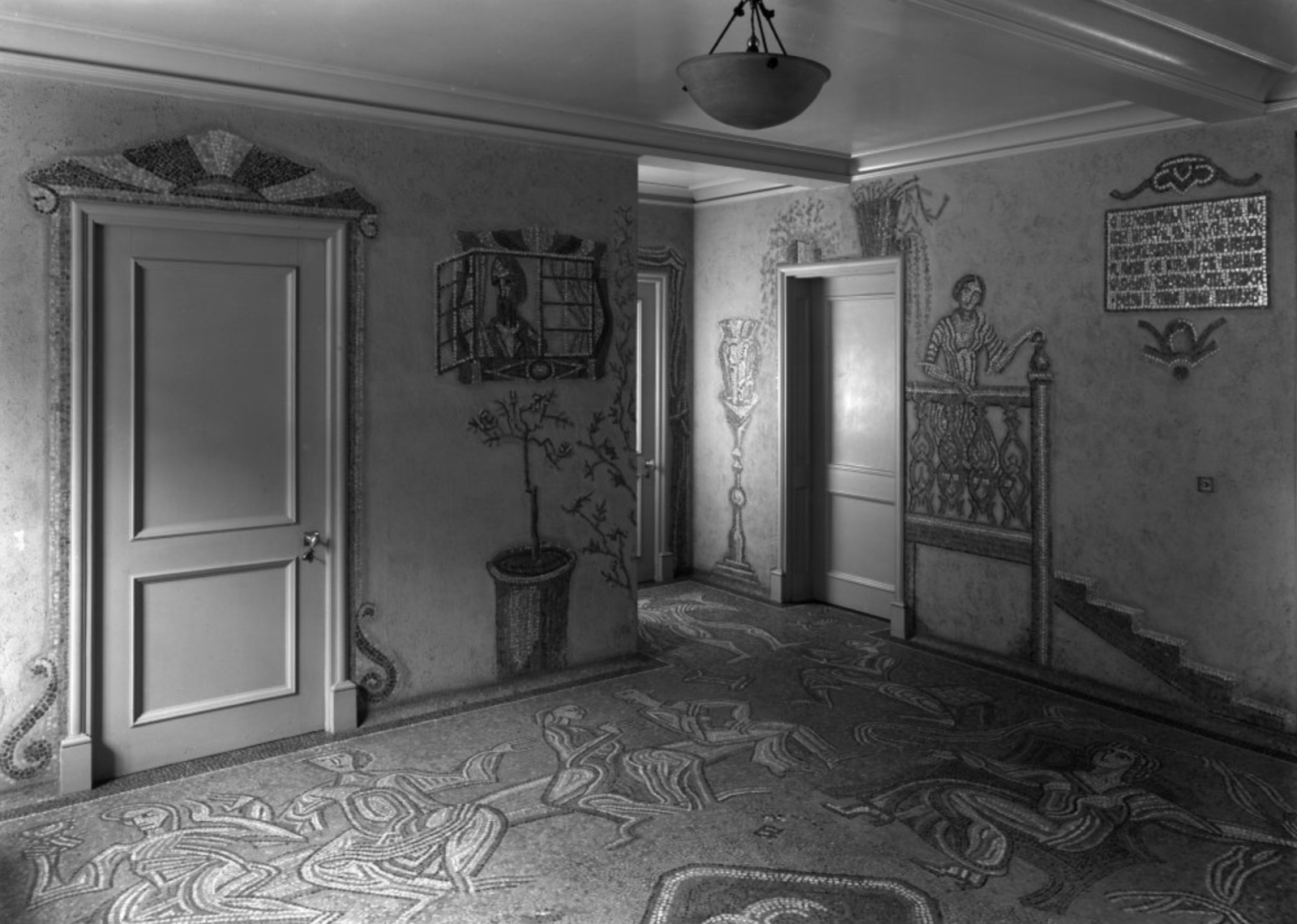Over the next three weeks, to celebrate Piano Nobile's current exhibition SICKERT: The Theatre of Life, InSight delves into the artist's work, highlighting some of his most imaginative and original contributions to the history of art.
Walter Sickert
The New Bedford, 1915
In 1967, the actor James Mason traipsed round London, talking to camera about the parts which 'nobody knows'. Of the New Bedford Theatre, he had this to say:
This theatre […] used to be the favourite theatre of Marie Lloyd, the famous music-hall singer. Now it's just a mess. For the last few years it has served as a shelter for pigeons and tramps and vagrants - not a very good shelter either because there's a bloody great hole in the roof and the rain comes pelting in. […] When a theatre has served its purpose […] by all means send for the wreckers and have it knocked down. But the sad thing about this place was that it was dead on its feet for so long, putrefying.
This documentary, The London Nobody Knows, filmed the New Bedford and its interior shortly before its demolition in 1969. It was a victim of cinema's rise and music-hall's decline.

As Richard Shone points out in Piano Nobile's exhibition catalogue, '[i]f not for a plaque on a building at the back of the site and Sickert's paintings of the two theatres, the Old and New Bedford might otherwise have been forgotten.' Both the 'old' and 'new' theatres were on the same site in Camden High Street, with the old theatre being knocked down to make way for a larger, more elaborate building which was completed in 1899. Walter Sickert (1860-1942) was familiar with both, being a seasoned frequenter of music halls over many years, not just those in Camden but also The Old Mogul in Drury Lane, Collins' Music Hall in Islington, the Metropolitan Music Hall in Edgware Road, and so on.

By the time that Sickert painted The New Bedford in 1915, he was long-acquainted with the music-hall interior: its drama, the hunched audience in the gallery, the gilt plasterwork, the fitted mirrors, the play of light reflected from the stage. Though he had painted it many times, he had not previously attempted to realise it at such a large scale; the canvas measures 166 by 111 centimetres. The occasion for this grand effort was a commission from his friends, Ethel Sands and Nan Hudson, whose newly constructed home in 15 Vale Avenue (now The Vale), Chelsea, had a dining room to decorate. The New Bedford complements two other paintings of a similar size which were intended to hang on the chimney breast and the adjacent walls.

To execute these large decorations, Sickert took a dedicated studio on Brecknock Road in Tufnell Park. After a false start attempting to use old drawings, he set to work producing a new series of sketches and visited the New Bedford every night in January 1915 for the purpose. With these, he executed a large oil sketch (58.5 by 81 centimetres), illustrated below, which includes a wide sweep of the theatre's auditorium.

Following this oil sketch, Sickert began a set of large canvases that show more focused portions of the gallery level. They begin on the left with Piano Nobile's painting of The New Bedford, which shows the stage box and the caryatid on its left-hand side, moving sequentially across two further canvases to show neighbouring areas of the gallery. The second, central canvas is illustrated here; the whereabouts of the third canvas is unknown.

Despite Sickert's good intentions, Ethel Sands's dining room was eventually decorated by Duncan Grant and Vanessa Bell. It is unclear how advanced in Sickert's scheme the large paintings of The New Bedford were when he stopped working on them. These remarkable and evocative paintings are in parts very resolved, as in one of the plaster caryatid figures, while other areas are executed in cursory outlines. Their great size implies that they were the 'final' canvases, ready to be installed upon completion. However, it is most likely that Sickert never resolved within himself how to complete them. In any case, the paintings were never delivered. The signature at the lower left-hand corner of Piano Nobile's New Bedford is telling, however. To Sickert, this was a work worth releasing to the world and, more than a century on, it is easy to see why he thought so.
Images:
1. Walter Sickert, The New Bedford, 1915, tempera on canvas, 166 x 111 cm | For Sale
2. James Mason walking through the New Bedford Theatre in The London Nobody Knows (1967)
3. Walter Sickert, The Old Bedford, circa 1890, Victoria & Albert Museum, London
4. The hall at 15 Vale Avenue, Chelsea, decorated with mosaics by Boris Anrep
5. Walter Sickert, The New Bedford, circa 1915, The Mercer Art Gallery, Harrogate
6. Walter Sickert, The New Bedford, 1915, Private Collection
7. The caryatid in The New Bedford (detail)


